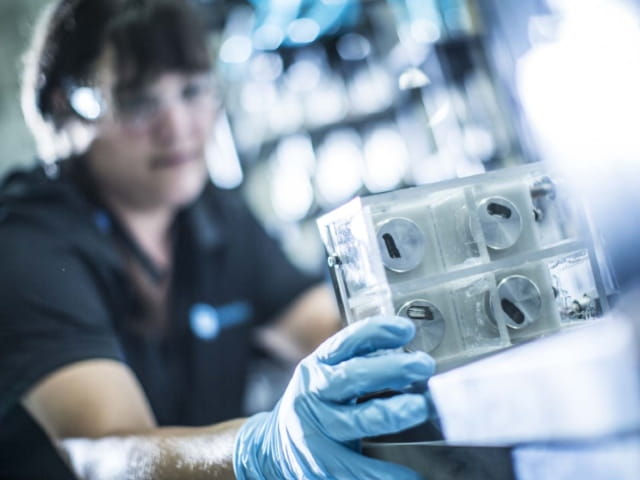Pin on disk testing provides a method of characterizing the wear between two materials. Our Engaged Experts use this method to evaluate the performance of a “wear couple” or to characterize the performance of different materials against a standard surface.
Pin on disk can simulate multiple wear modes, including: unidirectional, bidirectional, omnidirectional and quasi-rotational wear. Our equipment allows us to test virtually any combination of materials to determine the effect of wear on a medical device. While we can accommodate a variety of projects, we commonly test in reference to ASTM G99, ASTM G133 and ASTM F732.
When is wear testing needed?
The FDA and other regulatory bodies will often request mechanical wear testing when the device being tested is introducing a new material couple, or if a new material interaction hasn’t been adequately characterized through mechanical testing alone.
Wear testing is also critical for comparing the wear properties of new devices to a previous generation device. However, it may not be cost-effective, or even feasible, to perform wear testing on a finished product. Pin on disk testing allows for quick simultaneous comparison of multiple materials under controlled conditions.
After completing pin on disk testing, our Engaged Experts conduct mass-loss evaluations and particulate analyses of test fluids to characterize wear debris. In addition, profilometry can be utilized to evaluate the changes in surface topography due to articulation. Metallurgical evaluations of the post-test wear scarring can also be performed. In some cases, we can also introduce third body debris to characterize wear under real-world worst-case conditions.
High capacity pin on disk testing
Element performs pin on disk wear testing in reference to ASTM G99, ASTM G133 and ASTM F732 on our in-house, custom-built, 12-station wear test frames. These unique, high capacity machines allow for the testing of several material combinations at a time, on a single test frame. The 12-station setup also allows for additional confidence by testing multiple samples per condition.
For more information about our pin on disk testing capabilities, or to speak with an expert, contact us today.
More from Element
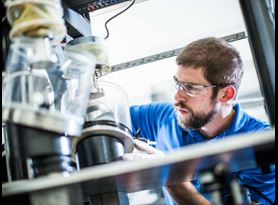
Medical Device Testing
As a comprehensive testing partner, you’ll enjoy the benefit of a single supplier source for all of your testing needs, from mechanical testing and environmental simulation to EMC and wireless device testing.
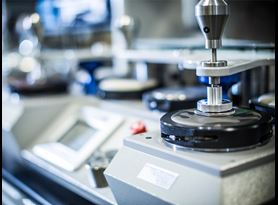
Abrasion & Wear Testing
Our Engaged Experts perform abrasion and wear testing that will help predict the lifetime and durability of a material or coating.
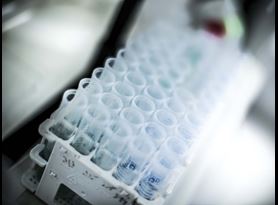
Microbiological Testing
Our experts undertake a wide range of projects for medical device and pharmaceutical manufacturers, from pathogen and bioburden testing to endotoxin and cytotoxicity analyses.
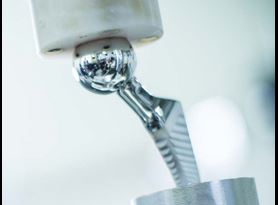
Orthopedic Implant Testing
As a global leader in orthopedic implant testing, Element has years of experience in evaluating hip replacements, knee prostheses, spinal devices and many other implants.
